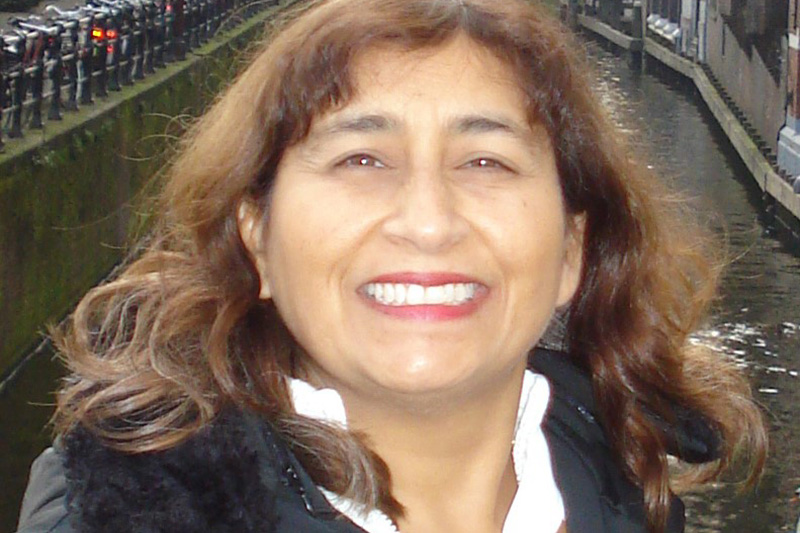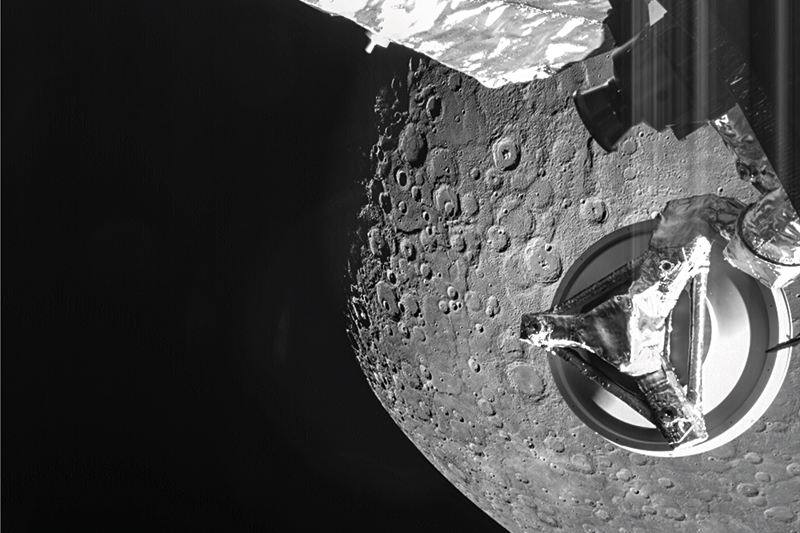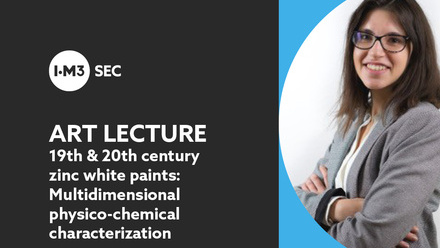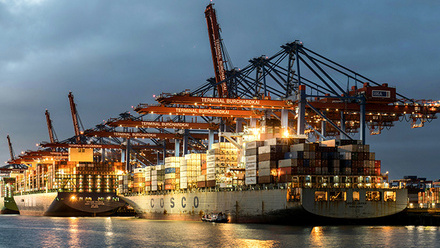The sky is not the limit - a career navigating planes, trains and rockets
Nicky Bradford CEng FIMMM has been involved in testing some of the biggest European Space projects of the last 20 years. Alex Brinded caught up with her about her journey navigating planes, trains and rockets.

Nicky Bradford was brought up in Derby, UK, 'home of the jet engine and railway”. She recalls, 'I was surrounded by industry – aerospace and the rail industry dominate Derby.'
Her interest in aviation particularly began early. 'I was always fascinated by things that fly. You think – how on earth is that great, big, huge vessel going to take off and remain up there, while keeping passengers safe and then land safely.'
Once she started looking up, her sights soared. 'I was absolutely mesmerised by Space missions like Voyager to explore the Universe and Mars Rover.'
After a Naval helicopter landed at her school, she realised that might be a route to follow her interest in all things airborne, applying to the Navy aged 18. However, in the 80s, she says women were not allowed to go to sea. She was advised to reapply after university if still interested, for that of a driver or administrative type role which did not interest her at all.
As A-levels didn’t offer Bradford the engineering diversity she was interested in, she achieved a Distinction and Merit Level in fabrication and welding – a three-year BTEC OND Diploma course at Derby’s further education college. 'I really enjoyed it…materials science and metallurgy were a big part of it, because to join things together you need to understand the science behind it. We started right from the basics. I felt that course was just what I was looking for.'
Again, she felt different for being a woman. 'I was the only girl, even though I come from quite an industrial city in the Midlands…When I arrived, a few of the lads at the time thought I had walked into the wrong classroom.'
But the course itself didn’t discriminate. 'I was so warmly welcomed by all the teaching staff who were very supportive and guided me throughout the entirety of the course. They actually had promoted the course for both genders, but that particular year they just didn’t have as many applicants. The railway industry in Derby was pretty much male-dominated because it was quite heavy engineering but that did not me put me off.'
Bradford was already noticing inspirational women in engineering, and was inspired by Sally Ride, a NASA Astronaut who flew on the Space shuttle Challenger in 1983. 'Sadly, the Challenger crashed in 1986, but that did not stop me pursuing my studies in Materials Science. From failure, you build structures better, stronger and safer.'
Taking off
Aviation also still provided inspiration. 'The most important aeroplane that I was absolutely fascinated with was the Concorde…Its first flight was in 1969 and it remained in service for 30 years, and was the most advanced passenger plane in the world. It still holds the record for the fastest commercial plane to travel between London and New York, and flew at Mach 2.
'I never flew in it, but I have been inside it and saw it take off from New York. It was absolutely amazing to watch it take off. It was also the first time that the British and French aerospace industries formed a joint venture.'
After completing her fabrication and welding engineering course, she went to Sheffield Hallam University (formally Sheffield City Polytechnic) to study a Materials and Microstructual Engineering degree. She reflects, 'I really loved studying the atomic structure of materials and the behaviour of mechanical properties under stress. If you understand the behaviour, then you can understand how the mechanical properties are going to work when it is in operation.'
She continues, 'As metallurgists, we sort of wear three hats – you need to know enough chemistry to apply it but you are not a chemist in the true sense; you also need some understanding of physics but you are not a physicist.'
So why has she mostly worked in testing? 'Testing is fundamental to every product in service. Whether it is a table, chair, sofa, car, plane, etc. But in aerospace there are very strict testing criteria requirements to meet because of the stress loads and strains they are subjected to in operation. You must design and build a structure to allow for flexibility, durability and strength. And we can’t afford for it to go wrong. With human life at stake, everything must be tested to ensure the safety and integrity of the structure is not compromised during operation.'
Understanding why materials failure happens was a key part of her course with an array of examples to work from, including Liberty ship structures and aeroplanes such as the Comet Air Disaster 'We were studying about applied stress and what happens to things when you subject them to various fatigue loads.' For example, 'windows on airplanes are oval-shaped because squares and sharp corners are stress raisers, and therefore rounded to combat cracks initiation.'
About once a month, the students would visit different industries, such as to the then British Steel in Scunthorpe, Lotus Cars and Alcan Industries.
She continued her studies for a further 18 months with a BSc (Hons) in Industrial Engineering with Business Systems at De Montfort University, which concentrated more on production design and manufacturing.
And there was a brief segway from aviation as she worked for the Leicestershire Constabulary, which was employing material scientists to test items that may be admissible in court such as clothing. She worked in the evidence prep room and nearly changed her career trajectory as she found it extremely interesting.
After university, she put theory into practice as a graduate metallurgist at Linread Northbridge in Leicester, UK, manufacturing jet engine fasteners.
The experience transformed her view of the value of practical work to explain scientific processes. She says, 'I found in more recent years working with some current younger graduates, that they have learnt the theory side, but a lot of them are interested in modelling, which is fine, but I feel that some of them did not want to get their hands dirty in the materials test lab. At some point, you need to be able to do practical work, such as metallographic prep of materials and instruct technicians who may rely on your knowledge.'
But it seemed flying around the world was cemented in her future. By this point, she had met her future husband of nearly 25 years now, who ironically was serving in the Royal Navy, and still is. His multiple postings meant numerous relocations, while her own contracts working on particular products zig-zagged her from place to place. This has not negatively impacted her career journey.
Testing, testing
She has worked on many telecommunication satellites, such as Amazonas 2, the Sentinel series and Galileo, as well as the Space exploration probes, including Gaia, Bepi Colombo, Solar Orbiter and the Jupiter Icy Moons Explorer (JUICE) – which launched in April 2023. The probe makes detailed observations of the giant gas planet and its three large ocean-bearing moons – Ganymede, Callisto and Europa – with a suite of remote sensing, geophysical and in situ instruments.

Such is the timeline of aerospace that Bradford’s work on JUICE was more than 10 years ago, which included preparing and approving declared materials and mechanical parts lists. She also worked on the earth observation satellites Sentinel and Copernicus and the European Mars Rover Mission. 'I also really enjoyed working on the Bepi Colombo probe going to explore the planet Mercury. We did all the materials selection for the high-pressure regulator assembly in Portsmouth, UK. Qualification, testing and analysis of any chosen material is paramount for any product in service.'
She applied the same rigorous methodology of testing on various telecommunication satellites, when she was at Airbus Defence and Space (formerly Astrium). 'All those satellites are in Space for 20-plus years, and they have got to work without failing once. In the Space industry, failure is not an option. After all there are no field engineers working in Space. Something is going out of the planet and never coming back, it has to work all of the time.'
She enthuses, 'There are thousands of people monitoring how those particular satellites are working. It is a really fascinating field and I love working in it.
'All the probes are designed to do a specific task in Space so that mankind has a better understanding, so that we can learn to live better and appreciate life on our home planet more. We are basically looking for signs of life. Are we alone is the multi-billion pound question.
'On the moons of Jupiter, Ganymede, Europa, it is believed there is frozen water, and there could be micro-organisms of life there. It is going to take about eight years for the JUICE Explorer to get there, and in that time, it will be sending data as it travels through Space. There are a lot of people working on this project at the European Space Agency (ESA), where I was contracted for 18 months in the Netherlands.'
At one point she was commuting weekly to the European Space Research and Technology Centre in the Netherlands, a division of ESA, from her home in Mons, Belgium.
Bradford is nostalgic about her work and sanguine about the future, 'I’ve had a really good, diverse career path, and I’ve enjoyed the journey to where I am now – the learning never stops, and I enjoy it.'
A case in point was a course she did on Non-Destructive Testing at The Welding Institute in Cambridgeshire, UK, to expand her repertoire.
Opening doors
She is brimming with the opportunities she has had in her career. 'I think sometimes people get a bit disillusioned because they hear negative comments, especially when entering into what was traditionally known as ‘a man’s world’. But the opportunities and the doors that were available for me to go through have been fascinating. I’d say to anybody, don’t be put off. The doors are there to go through – they will eventually open.
'For any young women, I would certainly encourage them. I’ve been involved with the STEM Ambassador programme for many years. And that’s the one opportunity I have to talk about materials science, and I love it. If I can inspire one or more person, then that’s absolutely fantastic.'
Bradford is also an interviewer and trained assessor for IOM3 and enjoys participating in Institute activities.
'I would say my career journey has been varied with my husband serving in the Royal Navy, and I have learnt to adapt, overcome and taken the decision to take a little break from
my job role in order to have a more family life balance which has worked out quite well.'
Striking a balance
When her husband was moved to Napoli, Italy, in 2000, she decided to go with him. With a lot of heavy industry located further North, Bradford was unable to find a job in aerospace locally and began teaching English, Maths and Science 'with a bit of geography' at a Montesorri school at the NATO Base.
'The teaching experience in Italy really benefitted me in the next stage of my career.' When Bradford and her husband returned to the UK, she explored other job opportunities and so contracted with BAE Systems in Portsmouth. She also decided to widen her teaching experience and applied as a Lecturer of Engineering Materials at SEME/REME in Bordon, Hampshire. She formalised her training with a full PGCE Certificate in Education in the three years she was there, but moved on as she was approached by Rolls-Royce.
She also spent four years at Reaction Engines, mainly in the Quality Assurance Department managing the Materials Test Laboratory, and like many of us had to work from home during COVID-19. This was a bit of a revelation for someone who had previously changed jobs with each new relocation. 'I did so much work from home and concluded that I was able to work from home for some of the time. Obviously, some of the testing activities in the Materials Lab were put on hold until we were allowed to return to work from site.'
As well as needing to change roles whenever they relocated, being the wife of a member of the armed forces has other challenges.'There have been some periods of loneliness when my husband has been away at sea or on operational deployment. You can’t communicate by a mobile phone. Those are frustrating times, but you accept that, and you appreciate the support from family and friends, and the Navy.'
She is currently consulting at a local oil and gas company on materials selection and testing in Stavanger, Norway.
Bradford has plans to learn some Norwegian as they will be in Stavanger for the next couple of years at least. She already speaks Punjabi and Hindi from her childhood, some German from school and college, a bit of French from living in Mons, Italian from Napoli, and was foiled in speaking Dutch by English-fluent nationals. Her outlook on language sounds like her outlook on life, 'I think you have to be broad minded, able to adapt and be positive, Why not learn from one another?'







